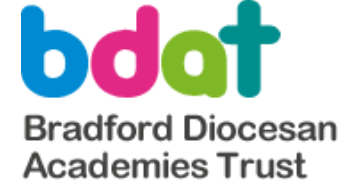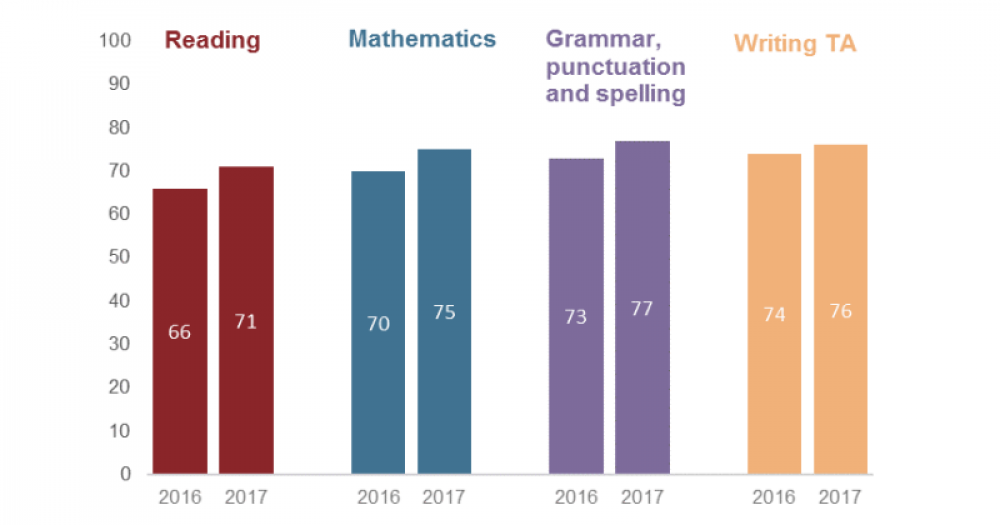Sixty one per cent of pupils achieved the government’s “expected standard” in reading, writing and maths in this year’s key stage 2 SATs, up from 53 per cent last year, interim results published by the government show.
The results show that the proportion of pupils reaching a scaled score of 100 or more rose in every discipline.
In reading, 71 per cent achieved the standard, compared to 66 per cent last year, while 75 per cent met the standard in maths, up from 70 per cent.
SATs data only gives parents part of the picture when judging a pupil’s success or a school’s effectiveness
In spelling, punctuation and grammar tests, 77 per cent of pupils met the expected standard, up from 73 per cent, and the proportion meeting the standard in writing was 76 per cent, up from 74 per cent.
The government has also published the marks pupils needed for the 2017 key stage 2 tests to achieve the government’s “expected” scores. You can read about them here.
Schools minister Nick Gibb says the results show “sustained progress in reading, writing and maths” and are a “testament to the hard work of teachers and pupils across England”.
“Thanks to their commitment and our new knowledge rich curriculum, thousands more children will arrive at secondary school having mastered the fundamentals of reading, writing and maths, giving them the best start in life,” he said.

The results published today are only interim, and we will not find out how many schools have fallen below the government’s floor standards for SATs until the final results are published in December.
However, school leaders have called for caution over the results, urging people not to judge schools on SATs results alone.
“Currently, the methods to hold schools to account aren’t as fair or as reliable as they should be,” said Russell Hobby, general secretary of the National Association of Head Teachers.
“SATs data only gives parents part of the picture when judging a pupil’s success or a school’s effectiveness. League tables are the least helpful way of knowing if a school is the right place for your child.
“At the moment, parents and schools know that these results have to be taken with a pinch of salt. This can’t be right. Just looking at data misses the majority of the real work that schools do to help young people achieve their full potential.”
Julie McCulloch, primary specialist at the Association of School and College Leaders, congratulated schools, teachers and children on the results, but said her organisation has “grave concerns” about the impact of SATs on the curriculum and children’s “broader experience” at primary school.

“It cannot be right that the performance of primary schools is judged on a set of tests taken over just four days in May at the end of the seven years children spend at primary school.”
Allana Gay, deputy headteacher at Lea Valley primary school, said the changes to scaled scores were “significant” for any examination paper, and welcomed the NAHT’s call for calm.
“It seems that the assessment is going through a phase of finding where the standard lies,” she told Schools Week.
“Either that or schools have quickly adjusted to the new assessment and are being defeated by the bell curve. Good to hear the NAHT urge the public to be cautious with the results. Will need far more years of settling before it can become the reliable information source that is needed.”
It follows a chaotic year for primary testing in 2016, during which the system was plagued by issues stemming from new, harder tests and other problems like the high-profile leak of a test paper that led to an investigation into the work of the Standards and Testing Agency.
It also comes after Schools Week learned that the STA made the questions early on in this year’s tests for 10 and 11-year-olds slightly easier after reports that last year’s tests left pupils in tears.







Congratulations to all the hard-working teachers on getting the children beyond their SATs. SATs has taught children the fine qualities of resilience, satisfaction gained from hardwork, and a sense of belonging through part of a shared experience. But looking at this year’s results, I can only conclude the following: 1. The Reading Paper was easier (lower word count difficulty) and more accessible than last year’s resulting in a rise of 66% to 71% EXS. 2. The Writing Assessment was broadly similar because teaching and pupil’s abilities have not changed radically! 3. Maths is interesting – the papers were incredibly similar in difficulty to last year’s but the pass mark for EXS was lowered by 3 points so the rise from 70% to 75% can be atributed to this lowering. 4. SPaG is also very interesting – again the paper was broadly similar in difficulty to last year’s and my Y7 (aged 11) child did it at home out of interest and with the 2017 pass mark lowered by 7 points he has now increased his score from 78% to 86%. My point is, with all this statistics crunching, is SATs not a just convenient way for DofE to rank pupils against each other at a very impressionable age, causing a lot of stress for all concerned?
Nick says:
…the results show “sustained progress in reading, writing and maths” and are a “testament to the hard work of teachers and pupils across England”.
“Thanks to their commitment and our new knowledge rich curriculum, thousands more children will arrive at secondary school having mastered the fundamentals of reading, writing and maths, giving them the best start in life.”
The quote: “If you torture the data long enough, it will confess” comes to mind.
I say: “This data shows that the 2017 Reading Paper word count difficulty was lower than that in 2016 plus content was more accessible, meaning more children could “harvest” vital points in the 60 minute exam in order to pass. This has a knock on effect with the Combined Scores causing then to rise from 53% to 61% because more children passed the Reading Test. Simple. The children have NOT got cleverer – but they HAVE been ranked.”
Must have been easier this year.
These tests have no educational value and should be scrapped.
Have I misunderstood? This year more students passed the lower mark? Standards have risen.